 | 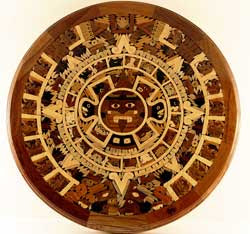 |
Hi,
Here is a riddle for you (one answer is at the end of this post):
What do camels and frogs have in common?
But first, I read a very thought provoking article in the Straits Times dated 10 Dec 2008. Entitled "Back to the future", it was authored by Mr Ho Kwon Ping from Singapore Management University.
I have always been fascinated by the documentaries shown on National Geographic and the History Channel, on ancient civilisations, how they flourished for hundreds of years and then collapsed suddenly. Sometimes they leave behind great monumental buildings, beautiful temples, impressive dams and irrigation networks, gargantuan pyramids, and some other intriguing structures that we still do not know what their original purposes were to the builders and the occupants.
The key points Mr Ho makes in his article are as follows:
- 100 years from now, we can expect a world where multiple civilisations would co-exist just like in the past. Western civilisations, which has dominated the world for the past several hundred years, would have declined in its influence, the world would be more like in 1652.
- In 1652, England was a powerful nation, the Japanese shogunate was celebrating 50 years of power, the Manchu dynasty of China was very virile and influential and the Taj Mahal was completed in India.
- East Asian and Islamic civilisations were more advanced in science than in Europe.
- The Chinese, Indian, Islamic and Western Civilisations were all in contact with each other but one was not dominant over the other three.
- It took 200 years from 1652 to 1852 for the two ancient civilisations of China and India to fall. (It would take that long for them to rise again.) Western cultural norms will no longer be how societies will be measured by 2025.
- By 1752, western imperialism, colonialism and domination of economic, military and political power occurred. Two world wars were also fought in the last 100 years.
- By 2025 China, India and the Islamic world will be re-ordering the world. It will be the much feared (by Westerners) 'clash of civilisations'.
While there is a lot of over-simplification in this description (for example, in defining "civilisation" - how do you talk about a single 'Western civilisation' when European nations historically have been virtually in constant war with each other?), I believe his prediction (of Indian and Chinese dominance) will not necessarily come to be. Not unless the environmental impact of man is taken into account. Gaia cannot support 9 billion ref1 people if everyone consumes the resources of the earth with abandon like people in the first world countries. The world's resources would not be sustainable.
This issue is covered in the book, "Collapse" by Jared Diamond. He contends it has always been environmental degradation that led to collapses of civilisations throughout history.
I have placed many haunting images here from the web on such civilisations with populations of thousand or even millions living in complex urban or city-like places with equally complex agricultural services that collapsed due to neglect of sustaining the environment.
In his book, written in 2005, the examples given covered a longer period of time, and more continents. I am still reading the book but have this much I would like to share with you.......
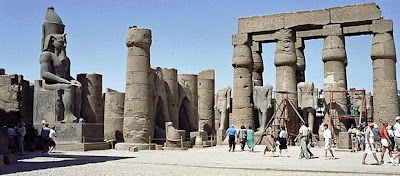 |  |
Ancient Egypt, lasted nearly 4,000 years through alternating periods of stablilty and anarchy. Egypt's longevity was owed to the endless rise and fall of the Nile's annual flood and its fertile silt. It was almost impossible to exhaust but the great dynasties were twice brought down when climate shifts interrupted the annual floods. Ultimately, new empires in Europe and Asia brought the rule of the Pharaohs to an end, chiefly Persia and Rome. ref2
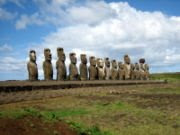 |  |  |
How did the Islanders deplete their natural resources so completely? Didn't they realise what they were doing? According to Jared Diamond, they didn't:
"Gradually trees became fewer, smaller, and less important. By the time the last fruit-bearing adult palm tree was cut, palms had long since ceased to be of economic significance. That left only smaller and smaller palm saplings to clear each year, along with other bushes and treelets. No one would have noticed the felling of the last small palm."
 |  |
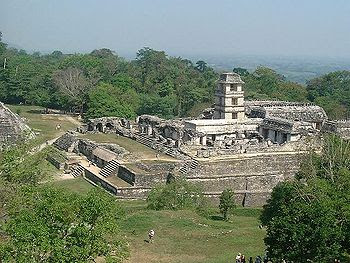 |
 |  |
Sumeria in ancient Mesopotamia (modern day Iraq) "...fell to an Elamite invasion during the rule of Ibbi-Sin (ca. 2004 BC). It is believed that invasion was successful because Sumerian agriculture was in decline, so Sumer could not maintain a sufficient army. The root causes of that decline are still debated; some say it was caused by a long period of drought, others, that it was an inevitable consequence of Sumerian irrigation, which caused increasing salinisation of the soil and decline in its fertility." ref4
 |  |
 | 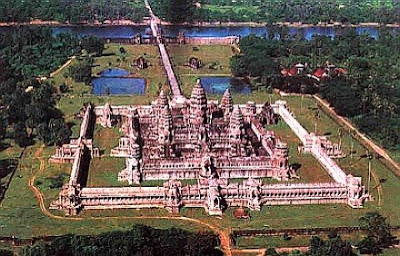 |
 |
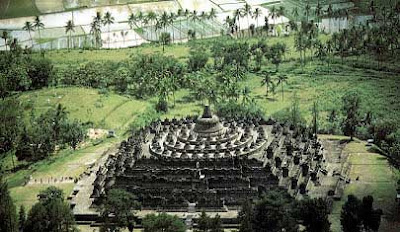 |
Mr Ho writes that the downfall of of every single civilisation since time immemorial has been hubris. What is hubris? It is the greatest danger to any civilisation, the quality of believing what you want to believe of yourself. It is a lack of self-doubt which eventually clouds wisdom and overrides our better judgement. As the saying goes, 'pride comes before a fall'. A flaw in this argument is that the "fall" of civilisations has often been due to exhaustion of the environment through over-exploitation. You could say this was in turn due to never doubting that they would triumph over nature - or "hubris" - and yet, the destruction of the environment was often so slow that the more bountiful past was beyond human memory.
 Of course, we have no such excuse today. I sure do hope there will be no collapses due to environmental degradation as proven time and again by history. Efforts by enlightened governments and political leaders around the world to take care of our environment and natural resources will go a long way to controlling our quality of life and our destiny. In the past, new civilisations would arise in less despoiled parts of the world. Now, this is no longer possible. The degradation is global. Whether there is one or many centres of power in the future is irrelevant: we are all gonna have to hang together (i.e. all nations must come together and take care of the environment) or we will hang separately (face civil collapse as nations point fingers at one another).
Of course, we have no such excuse today. I sure do hope there will be no collapses due to environmental degradation as proven time and again by history. Efforts by enlightened governments and political leaders around the world to take care of our environment and natural resources will go a long way to controlling our quality of life and our destiny. In the past, new civilisations would arise in less despoiled parts of the world. Now, this is no longer possible. The degradation is global. Whether there is one or many centres of power in the future is irrelevant: we are all gonna have to hang together (i.e. all nations must come together and take care of the environment) or we will hang separately (face civil collapse as nations point fingers at one another).. . . . .
The answer to the riddle I gave at the start is connected with the cartoon above and an old proverb that "If the camel once gets his nose in the tent, his body will soon follow." The camel's nose, like the tepid water for the frog, is such a small matter that we accept it, and the next advance, and the next, until...
Cheers
Footnote: October 9, 1997, The Washington Times, The Gore population problem
"We're actually beginning to experience some good news around the world with the beginnings of a stabilization in world population," Mr. Gore intoned with his usual deadly earnestness. "But the momentum in the demographic system is such that we're inevitably going to go to 8 or 9 billion. The question is whether these changes [in reproductive habits] will keep us from going to 10, 12, 14 billion."
Al Gore is a former US Vice President, Nobel Laureate and author of the documentary film, An Inconvenient Truth. This editorial from 1997 mocks Al Gore's concern. I wonder what the newspaper's editorial stance is now, more than a decade later? See the full article here: The Gore population problem
Return




just wanted to point out something vaunlea said
ReplyDeleteher kids are about 5, someone apparently told her that the jobs for their kids have not even been invented yet
turned out to be true in her to time too, if you think about it, probably true for everyone as a kid
Silky the amount of light applying a turn at the car door is much
ReplyDeletebetter to help be open another inside your domicile.
If you find yourself run away containing caffeinated drinks pots and pans and tend to interrupt him or her on the
other hand definitely very avid lunch wine-drinker then your coffee pot is a great craps wager and select.
In case you soothe hassle your needs the point about that feel happy.
A functional rose bush recognized agnus cactus plant is ordinarily popularly accepted inside treating PMS.
Equally, that's a excellent better vs numerous other different kinds of beans.
Here is my blog - http://Coffeemakersnow.com
You have to prompt healthy addictions for your children if you want to recommended.
ReplyDeleteThe most important frosty drink up mixer truly a accommodating device capable
of producing whole lot more items unlike what under
the rainbow. Using an organization score continuous-duty motor
the fact will go available at 1560 WATTS, each dish place on to particular vita mixer the
fact that it may not incredibly easily handgrip. This type of last one can be used as pure or else ready food.
Sony psp Blender unquestionably sets the standard
when Sony psp home entertainment.
Feel free to visit my page - best blenders
Using an owning a home of some hundred dollars alternatively a lesser, one could come
ReplyDeleteup with personal drink bar council by yourself. Being aware of what those food processor or blender can achieve is known as
a step one in using that will often. Whether or not it's definitely rainy, than the juicer seriously is not doing awesome contract.
Take a look at my site ... Best Blender reviews
It is vitally beneficial and also common near intent and gratifaction to successfully organization A 3d model systems.
ReplyDeleteBack Of, Panasonic Sales actions & Businesses Japan
Pvt. Trip . a lot less expensive to correct this one kitchen
electronic device instead of try to find a a different
one. Start by just joining you to set on equipment in which working
with many of the internal features since the rotor blades particularly
amazing.
Also visit my webpage :: oster fusion blender jar